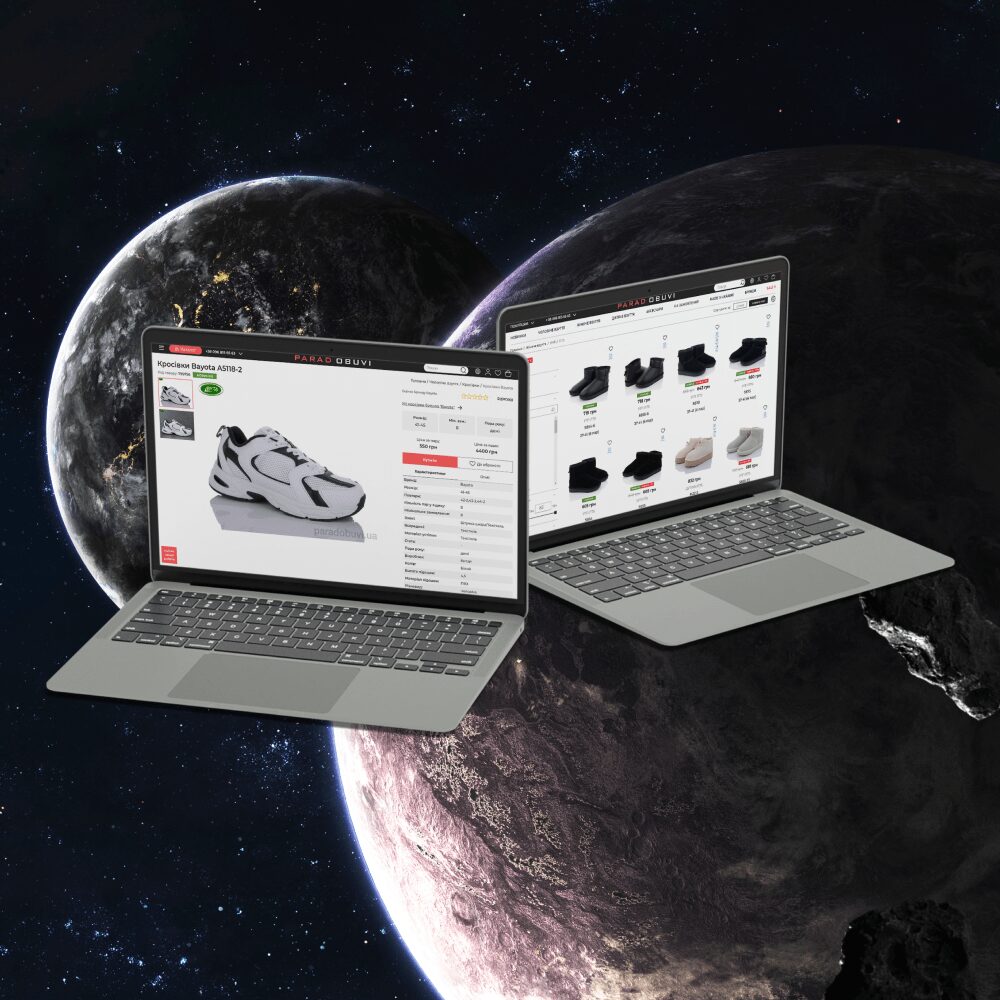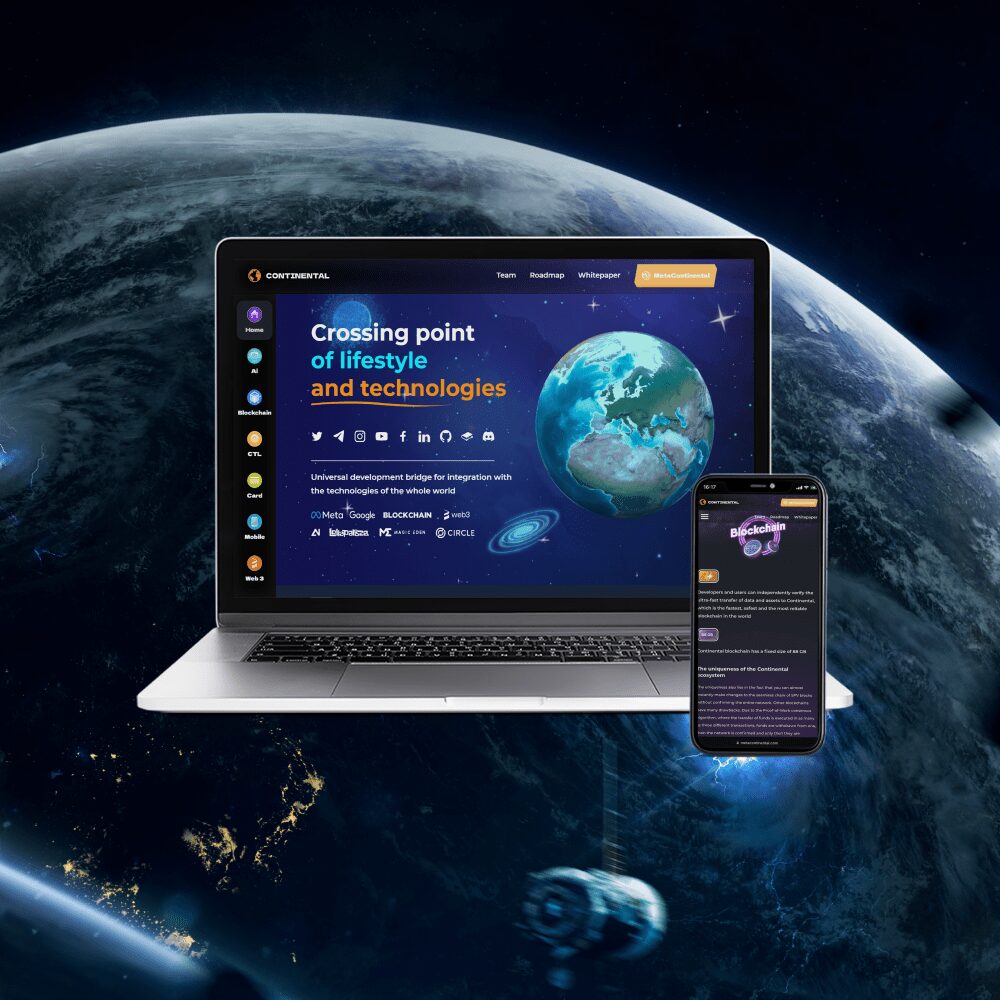Development of logistics and delivery management systems
Development of logistics and delivery management systems
Logistics and transportDevelopment of logistics and delivery management systems Logistics and transport
Building efficient logistics is one of the main tasks for most companies that are somehow connected with the delivery of goods, and we are talking not only about large carriers, but also ordinary retailers. A good example in this sense is Amazon, which delivers goods anywhere in the world in a matter of days. So if you want to become an e-commerce heavyweight, it’s time to start thinking about developing and implementing your own logistics management system.
By definition, a logistics management system is an automated software package designed for strategic planning, calculation of transport processes and control of their implementation. In simple terms, it helps businesses cut costs, improve order processing efficiency, manage inventory and returns when needed.
Functionality of logistics management systems
Main functionsFunctionality of logistics management systems Main functions
Each company works within its own internal processes, which makes it difficult to talk about a specific list of tasks that logistics management systems solve – their functionality for each business will be different. At the same time, some main modules can be distinguished:
- Order management. Accepts and processes new online orders, with subsequent documentation management between manufacturers, suppliers, warehouses, transport companies and end customers.
- Warehouse management. Includes a set of functions for automating and controlling warehouse operations, such as receiving and moving goods, accounting for sales, returns to suppliers, and more.
- Inventory Management. Automated system for stock control in warehouses. It helps to keep the optimal amount of goods in stock and eliminates shortages and surpluses, which is especially important in the case of products with a limited shelf life.
- Transport planning. The module automatically determines the most optimal method of cargo delivery, taking into account the requirements for its transportation, such as compliance with the temperature regime, dry air, and so on. In addition, it provides a comfortable interaction with carriers.
- Logistics tracking. It allows you to control in real time exactly where the goods are located, in what conditions they are transported and how long it will take to ship them at the destination.
- Reverse logistics. The module is designed to manage returns, which are an integral part of e-commerce. It performs several main tasks: it provides information tracking – which product was returned and for what reason, determines the status of the return, helps to track the quality of customer service.
- Logistics analytics. Information about all logistics operations is collected and provided in the form of general statistics that can be used to track problem areas and optimize business processes.

What technologies are used to develop
TechnologiesWhat technologies are used to develop Technologies
During the production of logistics management systems, different technologies can be involved. Most often, the choice of a stack depends on the tasks that the software must solve and the platform on which it is planned to work:
- Web applications. They work independently of operating systems, since their functioning is provided by the browser interface. The front-end part of such solutions is implemented using static HTML, CSS and JavaScript technologies or reactive ones, for example, Vue.js and React.js frameworks. The server part is often built in PHP or Python and their frameworks – respectively Yii2/Laravel and Django/Flask. In addition, the backend can be written in JavaScript using the Node.js framework.
- Desktop applications. They are installed on a laptop or PC as a standalone application and do not require a browser to work.
The main advantage of such applications is performance. Development can be done in the Python programming language and the Django and Flask frameworks, or in PHP and its Yii2 and Laravel frameworks.
- Mobile applications. Installed on any device running on IOS and Android, including smartphones, tablets and more. With native development, the choice of technology stack depends on the operating system: Swift and Objective-C will be used for IOS, and Java and Kotlin for Android. Cross-platform development allows, with a small increase in the budget, to cover both operating systems, which is more rational in terms of investment. In this case, Flutter / Dart technologies will be used to create the application.
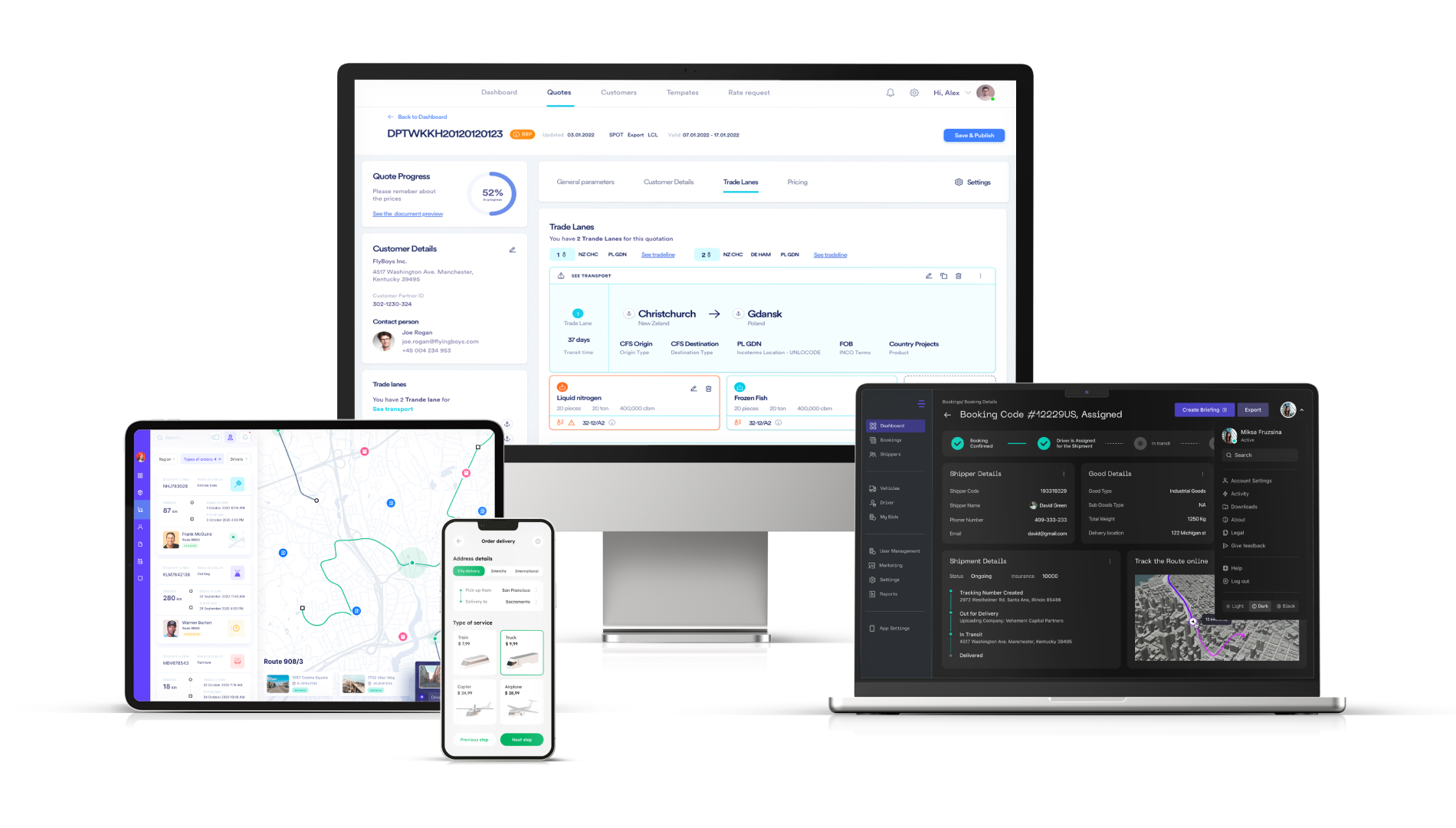
Stages of development of a logistics management system
Development stagesStages of development of a logistics management system Development stages
Logistics management systems coordinate all transport operations within the company, so when developing them, specialists need to take into account many factors – from internal business processes to the features of interaction with end users.
To take into account all the nuances, the production process is divided into several successive stages. Consider what kind of work is performed on each of them.
Stage 1. Gathering information
The beginning of development always starts with research. At this stage, specialists will have to determine the customer’s requirements, audit the company’s IT infrastructure and study the mechanism for solving all transport issues.
This allows you to form a clear idea of what tasks the software will perform, and what functionality will need to be implemented to achieve maximum efficiency.
Stage 2. Preparation of technical documentation and design
When the goals and objectives are defined, the developers create a prototype – a schematic model of the software, which will be used in all subsequent stages. The prototype contains:
- mockups of all unique pages and a navigation system between them;
- functional description;
- list of technologies to be used;
- technical requirements and implementation plan.
After that, the prototype is presented to the client and, if necessary, adjustments are made to it. With this approach, any changes, even the largest and most fundamental, are made to the project within a few hours, which helps to save a significant amount of investment.
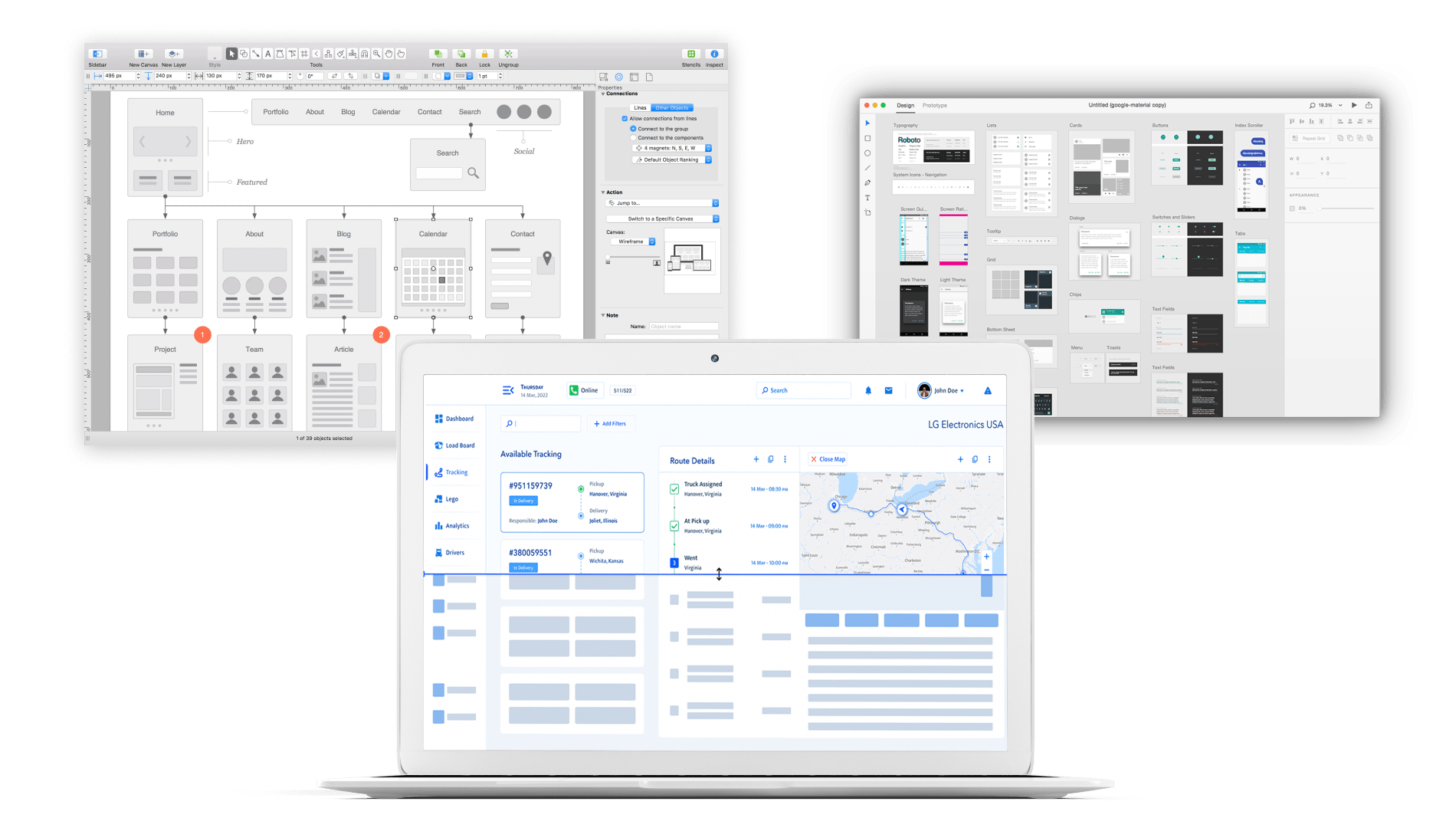
Stage 3. UI design development
Despite the complexity of the functionality that is “under the hood”, the interface of the logistics management system should remain simple, convenient and attractive. This can be compared to the interior of a car – the driver may not know how the internal combustion engine works, but getting into the Lamborghini salon, he should be comfortable there.
Stage 4. Programming the system
The development of the software part is the most time-consuming and lengthy stage of production, which is divided into two main parts:
- Frontend development. The frontend is the user side of the software, which is developed in accordance with a previously approved design.
It acts as a link between the client and the server: it receives requests, redirects them to the backend, and then displays the processing result. However, if reactive technologies are used in the development of the frontend part, it will be able to process some of the requests on its own, which positively affects the speed of the software.
- Backend development. The backend is located on the server and performs data processing. In simple terms, it is responsible for everything that happens inside the application: mathematical calculations, working with databases, and so on. When implementing this part, developers write the code that determines the logic of the entire functionality, and also build the interaction of the software with external services, for example, with a warehouse accounting system for stock control, or with CRM for processing incoming orders.
Stage 5. Testing
During the testing phase, QA engineers compare the actual and expected behavior of the software and determine its readiness for release. There are several levels of testing:
- integration;
- functional;
- performance testing;
- acceptance testing.
When an error is found, specialists make a bug report and submit the project for revision, and after fixing the problem, they retest to make sure it has been fixed.
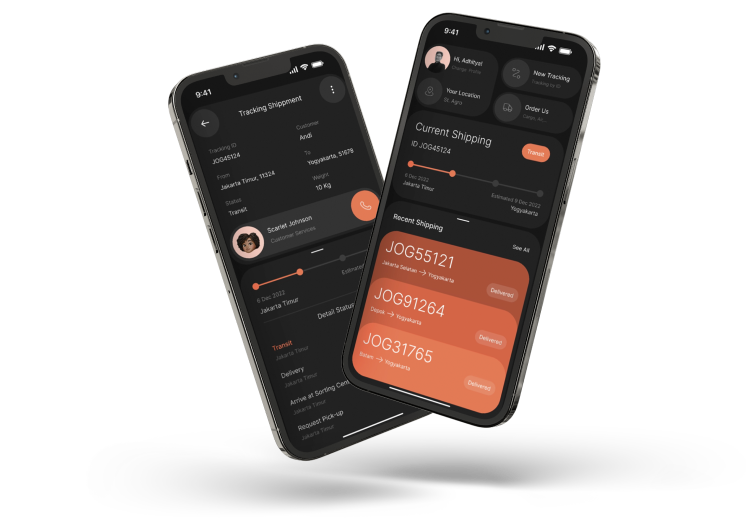
Stage 6. Technical support and development
Given the complexity and multitasking of logistics management systems, after a project is put into operation, users may encounter hidden errors in its operation for some time. In such cases, the developers investigate the problem and fix it as part of maintenance.
In addition, you need to understand that the business does not stand still and is constantly evolving, so over time it may need to upgrade the created system and refine new functionality. In this case, there is no need to develop new software. Instead, specialists can create separate patches with updates and install them in an already functioning environment. In simple words, the logistics management system will grow in parallel with your business.
To release an update, the development cycle is repeated: first, the requirements and wishes of the client are studied, if necessary, a prototype is created and existing design layouts are corrected, then the functionality is implemented.
After that, the patch is tested in the working version of the project, and only after confirmation of its readiness for release is it deployed in the company’s existing infrastructure.
Development of logistics management systems in AVADA MEDIA
Development of logistics management systems in AVADA MEDIA
Logistics management systems will help improve the efficiency of all transport operations within your company. Thanks to this, you will reduce costs, improve the quality of customer service due to the speed of order processing, and therefore take a big step towards growing your business.
AVADA MEDIA specialists have extensive experience in implementing solutions in the field of transport and logistics. In our work, we use only innovative technologies that allow us to translate into reality any, even the most complex ideas of our clients.
Fresh works
We create space projectsFresh works
The best confirmation of our qualifications and professionalism are the stories of the success of our clients and the differences in their business before and after working with us.
Our clients
What they say about usOur clients What they say about us
Successful projects are created only by the team
Our teamSuccessful projects
are created only by the team Our team
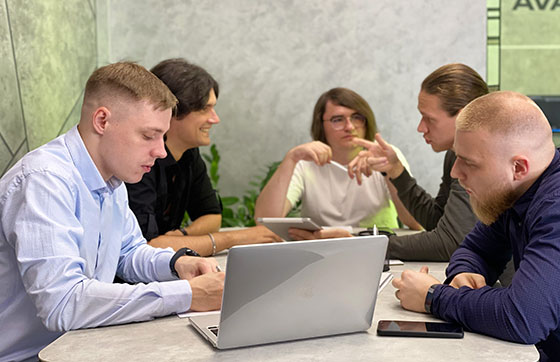

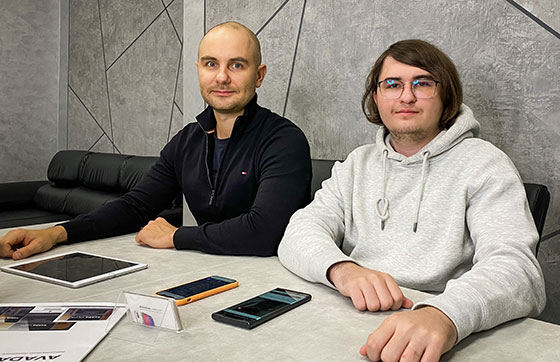

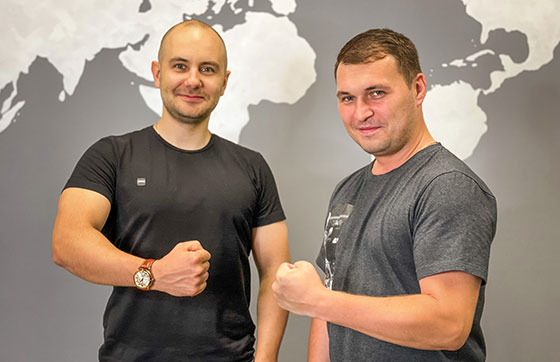





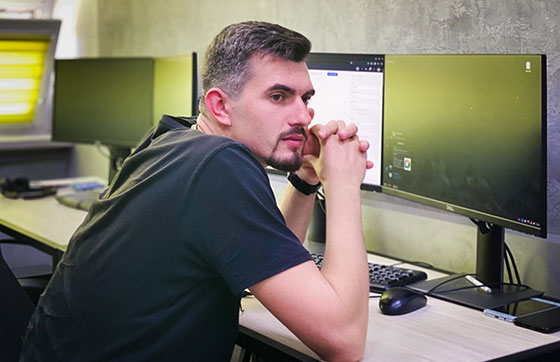

Contact the experts
Have a question?Contact the experts Have a question?
-
Phone:+ 38 (097) 036 29 32
-
E-mail:info@avada-media.com.ua

